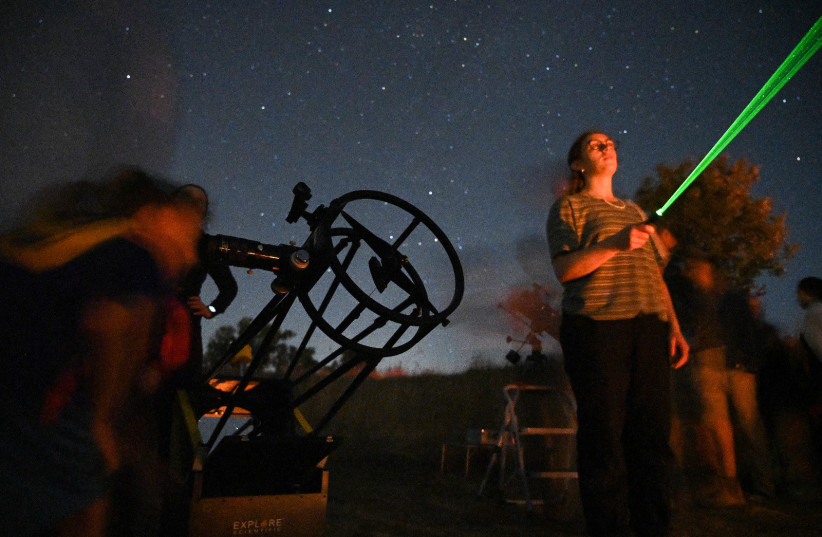Israelis are invited to gather at one of the several locations nationwide to watch the Perseids meteor shower this August.
The stargazing effort, organized by the Israel Space Agency and the Society for the Protection of Nature in Israel (SPNI), will see several locations set up with telescopes and instructions each day of the meteor shower, at the cost of just NIS 10.
This event will take place over the course of the Perseids meteor shower's peak, which will last from August 7 to August 11 and will be held from 8:00 p.m. to midnight.
"There is no more wonderful place than nature to strengthen the connection between outer space, man and infinite curiosity."
Shelly Ron Adib
<br>The Perseids meteor shower
The Perseids is the most popular annual meteor shower. Beginning in mid-July, it lasts until September 1 with a peak on August 12 or 13, depending on the year.
While the peak is generally the best time to watch the Perseids, this year, the full moon will be visible all night, meaning that the meteor shower will be harder to see this year. However, the peak of the Perseids rises gradually, so watching the shower the week before should provide a good view.

The meteors seen in the Perseids are actually particles released from the 109P/Swift-Tuttle comet - which returns to the inner solar system every year. The particles are colorful and leave persistent trains, making it the most famous and beloved meteor shower in the Northern Hemisphere.
The best time to view the Perseids will be in the middle of the night until just before dawn.
It can be difficult to see these meteors depending on the year, as moonlight can get in the way.
Last year was a particularly good year to observe the Perseids, especially from the Mitzpe Ramon crater in Israel's South. This is always a popular spot in Israel for stargazing due to very little light pollution, letting the night sky be filled with bright stars.
However, there are other locations that can be good for viewing meteor showers, with the Israel Space Agency and SPNI setting up locations ranging from the Golan, to Ashdod, Arad and even Eilat.
These locations will also have telescopes where the public can also view the constellations and other notable celestial bodies, with the notable aim of seeing Saturn, Jupiter and Jupiter's moons.
The goal of this effort is to help make summer stargazing easier for Israelis by still being relatively close to large population centers.
"This year, the moonlight will interfere with viewing the Perseids arriving, but this does not prevent us from continuing to make the field of astronomy accessible to the general public," Shelley Ron Adib of the Israel Space Agency said in a statement.
"This year's events will be nationwide for the first time," she continued, adding "There is no more wonderful place than nature to strengthen the connection between outer space, man and infinite curiosity."
For more information, visit: https://www.space.gov.il/perseids
Ariella Marsden and Simcha Pasko contributed to this report.
